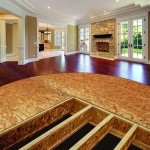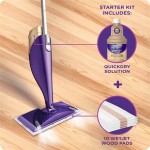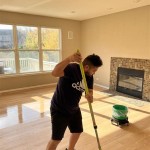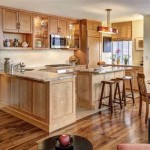How To Stop a Rug From Sliding On Wood Floors: A DIY Guide
Area rugs can enhance the aesthetic appeal and comfort of a room with hardwood flooring. However, the smooth surface of hardwood can cause rugs to slide, creating a safety hazard and potentially damaging the floor itself. Addressing this issue promptly is crucial for maintaining both safety and the integrity of the hardwood floor. This article provides a comprehensive guide to various DIY methods for preventing rugs from sliding on wood floors.
Understanding the Problem: Why Rugs Slide
The primary reason rugs slide on hardwood floors is the minimal friction between the rug's backing and the floor's surface. Hardwood floors are designed to be smooth and durable, but this smoothness also means there's little resistance against movement. Rugs, especially those with slick or thin backings, are prone to shifting with even slight pressure, such as foot traffic.
Several factors can exacerbate the issue of rug slippage. The type of rug material plays a significant role. Rugs made from synthetic fibers like polypropylene or nylon often have smoother backings compared to those made from natural fibers like wool or cotton. The weight of the rug is also a factor. Lighter rugs are more susceptible to sliding than heavier, denser rugs.
Furthermore, the condition of the hardwood floor can influence rug slippage. A newly polished or waxed floor will be particularly slippery. Even the presence of dust or debris between the rug and the floor can reduce friction and contribute to the problem.
DIY Solutions Using Adhesive Methods
One category of DIY solutions involves the use of adhesive materials to create a stronger bond between the rug and the floor. These methods range from using readily available household items to purchasing specialized adhesive products. Prior to applying any adhesive, it is vital to test a small, inconspicuous area of the rug and floor to ensure the adhesive does not cause discoloration or damage.
Double-Sided Carpet Tape: This is one of the most common and accessible solutions. Double-sided carpet tape is specifically designed to adhere to both the rug backing and the floor surface. When selecting carpet tape, it is imperative to choose a type that is safe for hardwood floors. Some tapes can leave a sticky residue or damage the floor's finish. To apply, clean both the rug backing and the floor surface thoroughly. Cut strips of tape to the desired length and apply them along the perimeter and across the center of the rug's backing. Press the rug firmly onto the floor, ensuring even contact with the tape.
Silicone Caulk: Another method involves using silicone caulk to create a non-slip surface. This approach is more permanent than using tape and should be considered carefully before application. It is suitable for rugs that are not frequently moved or cleaned. Apply small dots or beads of silicone caulk to the rug's backing, spacing them evenly across the entire surface. Allow the caulk to dry completely before placing the rug on the hardwood floor. The dried silicone will provide a textured surface that grips the floor and prevents sliding.
Hot Glue: Similar to silicone caulk, hot glue can be used to create a non-slip surface on the rug's backing. This method is best suited for smaller rugs or runners. Apply small dabs of hot glue to the rug's backing, spacing them a few inches apart. Allow the glue to cool and solidify before placing the rug on the floor. Like silicone caulk, hot glue creates a textured surface that increases friction and prevents sliding. It is important to use a low-temperature glue gun to avoid damaging the rug fibers.
Non-Adhesive DIY Solutions
For individuals who prefer to avoid adhesives, there are several non-adhesive DIY methods that can effectively prevent rugs from sliding on hardwood floors. These methods typically involve creating a barrier or increasing friction using alternative materials.
Rubber Shelf Liner: Rubber shelf liner, commonly used in kitchens and pantries, can be repurposed as a non-slip rug pad. Cut the shelf liner to the size and shape of the rug, ensuring it is slightly smaller than the rug's perimeter. Place the liner between the rug and the hardwood floor. The rubber material provides excellent grip and prevents the rug from sliding. Shelf liner is a cost-effective and easily replaceable solution.
Felt Pads: Felt pads are commonly used to protect hardwood floors from furniture scratches. These pads can also be attached to the corners and edges of the rug's backing to create a non-slip surface. Self-adhesive felt pads are widely available and easy to apply. Simply peel off the backing and stick the pads to the rug's corners. While felt pads may not provide as much grip as rubber materials, they can significantly reduce rug slippage, especially for lighter rugs.
Repurposed Fabric: Using old towels, blankets, or other fabric scraps can create a makeshift rug pad. Cut the fabric to the size and shape of the rug, ensuring it is slightly smaller than the rug's perimeter. Place the fabric between the rug and the hardwood floor. The fabric adds a layer of cushioning and increases friction, preventing the rug from sliding. This method is an eco-friendly and budget-friendly option for preventing rug slippage.
Purchasing Specialized Rug Pads
While DIY methods offer cost-effective solutions, purchasing specialized rug pads is often the most effective and durable option for preventing rugs from sliding on hardwood floors. These rug pads are specifically designed to provide optimal grip and protect the floor from damage.
Rubber Rug Pads: Rubber rug pads are made from natural or synthetic rubber and provide excellent grip on hardwood floors. They are available in various thicknesses and sizes to accommodate different rug types and room dimensions. Rubber rug pads are durable, long-lasting, and resistant to wear and tear. They also provide cushioning and protect the floor from scratches and stains.
Felt and Rubber Combination Pads: These rug pads combine the cushioning of felt with the grip of rubber. The felt layer provides a soft surface for the rug, while the rubber layer prevents it from sliding on the floor. These pads are ideal for delicate rugs or hardwood floors that require extra protection.
Memory Foam Rug Pads: Memory foam rug pads provide superior cushioning and comfort. They are made from memory foam and typically have a non-slip backing to prevent sliding. While memory foam pads are more expensive than other types of rug pads, they offer excellent support and reduce foot fatigue.
When selecting a rug pad, it is important to choose the correct size and thickness. The rug pad should be slightly smaller than the rug's perimeter to prevent it from being visible. The thickness of the rug pad should be appropriate for the rug type and the amount of foot traffic in the area. A thicker rug pad provides more cushioning and protection but may also raise the rug's height, creating a tripping hazard.
Maintenance and Prevention
In addition to implementing DIY solutions or purchasing specialized rug pads, regular maintenance and preventative measures can further minimize rug slippage on hardwood floors.
Regular Cleaning: Regularly vacuuming or sweeping both the rug and the hardwood floor removes dust, debris, and other particles that can reduce friction and contribute to rug slippage. Cleaning the floor beneath the rug is particularly important, as accumulated dirt can act as a lubricant, making the rug more likely to slide. Periodically lifting and cleaning under the rug is a crucial step in maintaining a secure and stable rug placement.
Spot Cleaning Stains: Promptly addressing spills and stains on the rug can prevent them from soaking through to the hardwood floor and causing discoloration or damage. Use a mild detergent and a clean cloth to blot the stain, working from the outside in. Avoid rubbing the stain, as this can spread it further.
Rotating Rugs: Rotating the rug periodically can distribute wear and tear evenly and prevent certain areas from becoming more prone to sliding. This is especially important for rugs in high-traffic areas. Rotating the rug also helps to prevent fading and discoloration from sunlight exposure.
Reapplying Adhesive: For rugs that are secured with adhesive methods, such as carpet tape or silicone caulk, it may be necessary to reapply the adhesive periodically as it loses its grip over time. Inspect the adhesive regularly and replace it as needed to maintain a secure connection between the rug and the floor.
By implementing these maintenance and prevention strategies in conjunction with appropriate DIY solutions or specialized rug pads, homeowners can effectively minimize rug slippage on hardwood floors, creating a safer and more aesthetically pleasing living environment.
Addressing Floor Finish Compatibility
Before implementing any DIY or commercial solution, understanding the compatibility of chosen materials with the hardwood floor's finish is paramount. Certain adhesives or rug pad materials can react negatively with specific finishes, leading to discoloration, etching, or even complete removal of the finish. This is particularly pertinent for floors with oil-based or wax finishes, which are more susceptible to damage from certain chemicals.
Always consult the manufacturer's recommendations for both the floor finish and the rug pad or adhesive being considered. A small, inconspicuous test area is crucial. Select a spot under furniture or in a closet where any adverse reaction will be hidden. Apply the chosen solution to this test area and leave it in place for the recommended duration, typically 24 to 48 hours. After removing the solution, carefully inspect the floor for any signs of discoloration, damage, or residue. If any negative effects are observed, discontinue use of that particular solution and seek an alternative that is compatible with the floor finish.
For older hardwood floors with unknown finishes, it is best to err on the side of caution and choose gentler, non-adhesive solutions, such as rubber shelf liners or felt pads. These materials are less likely to react negatively with the floor finish and provide a safer alternative for preventing rug slippage.

How To Keep Rugs From Sliding Polished Habitat

3 Ways To Stop A Rug From Moving On Wooden Floor Wikihow Life

How To Keep Rugs From Slipping On Wood Floors Design Tips Youtube

How To Make Non Slip Rugs Diy Method

5 Tips For Keeping Area Rugs Exactly Where You Want Them Chris Loves Julia

How To Stop Your Rug From Slipping And Sliding Youtube

5 Easy Ways To Stop Furniture From Sliding On Wood Floors

How To Prevent A Throw Rug From Slipping Youtube

How To Keep Rugs From Slipping On Wood Floors Design Tips Youtube

How To Keep Rugs From Sliding On Hardwood Floors And Other Surfaces Slipping Rug S Over Carpet







